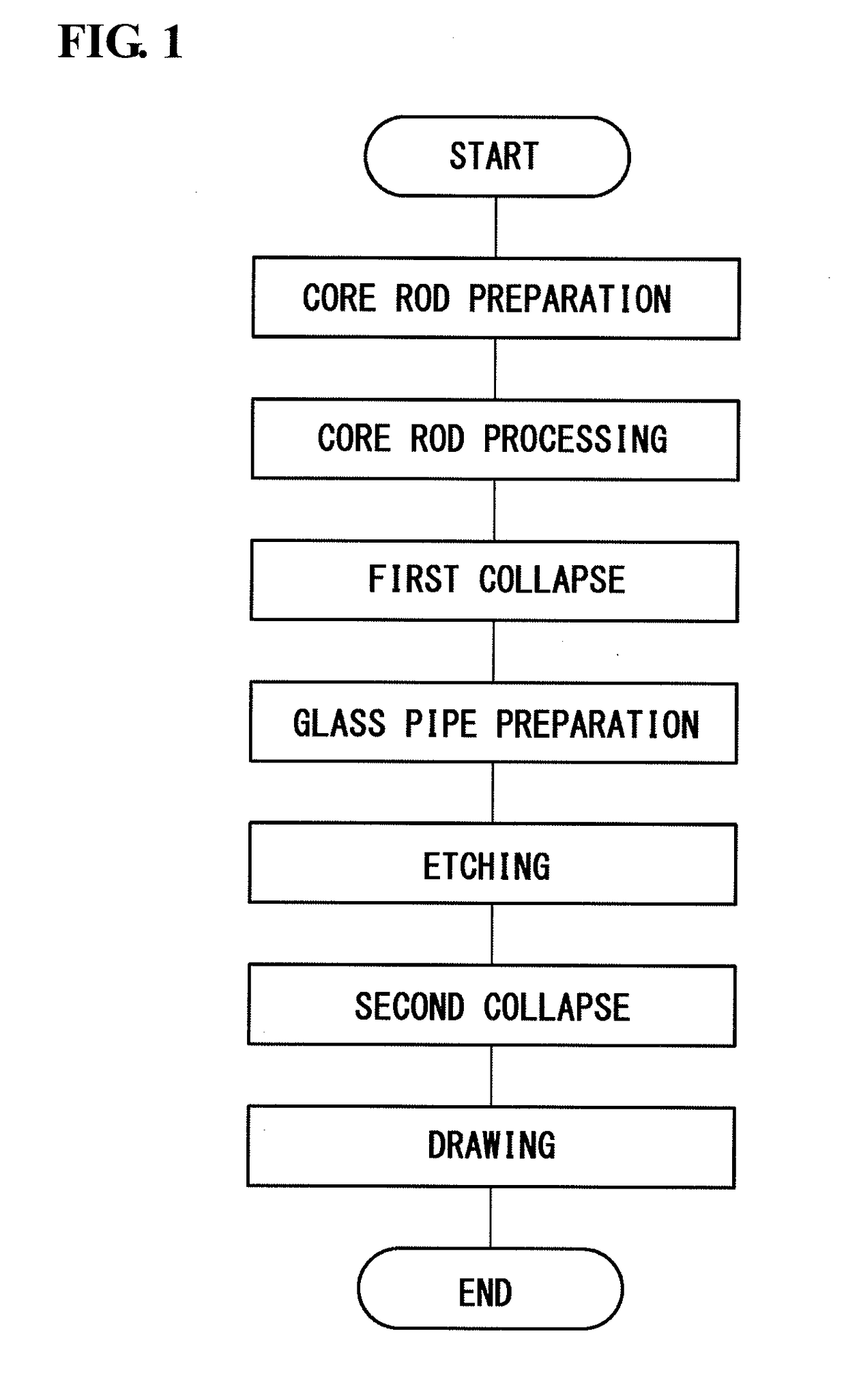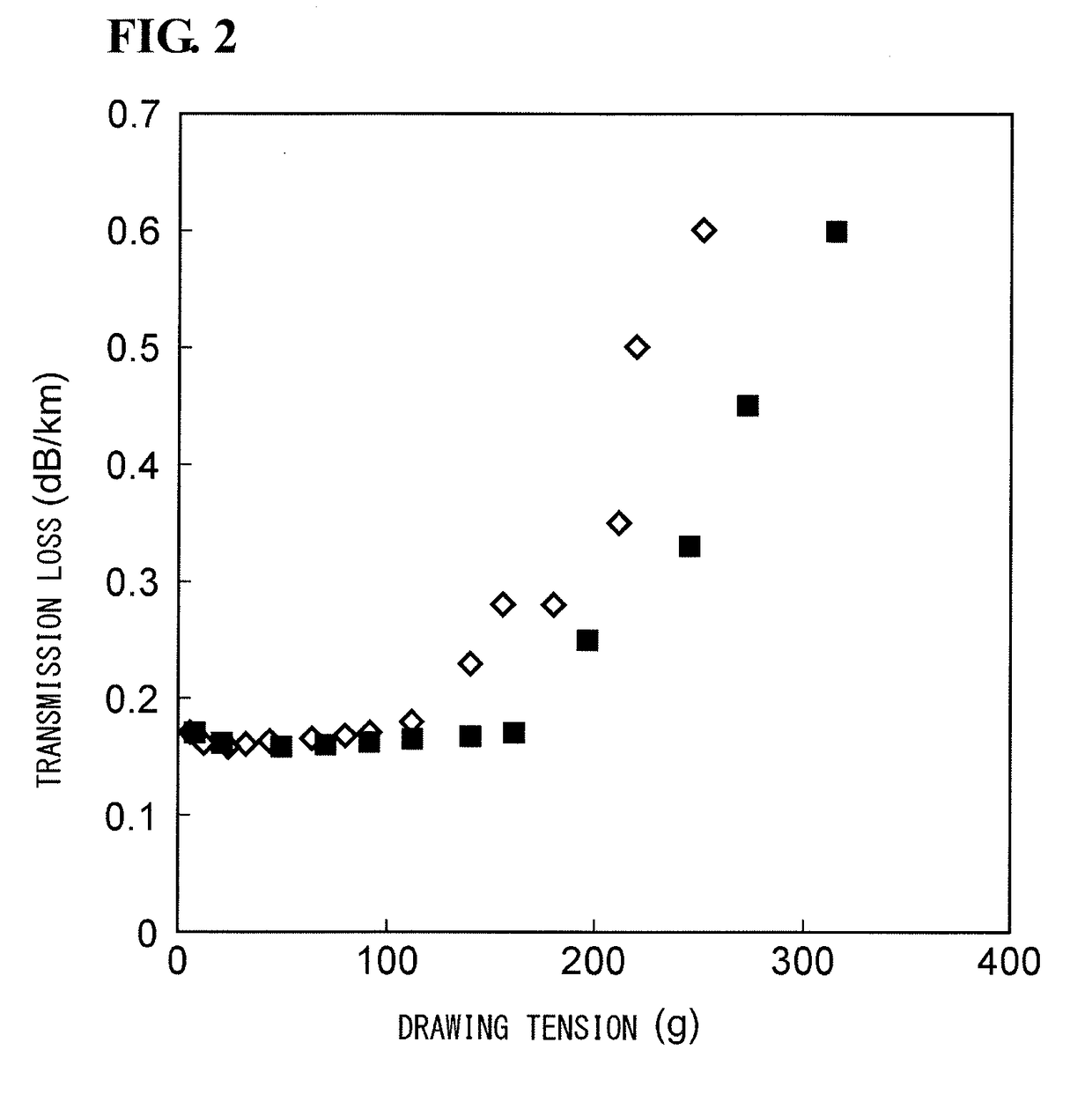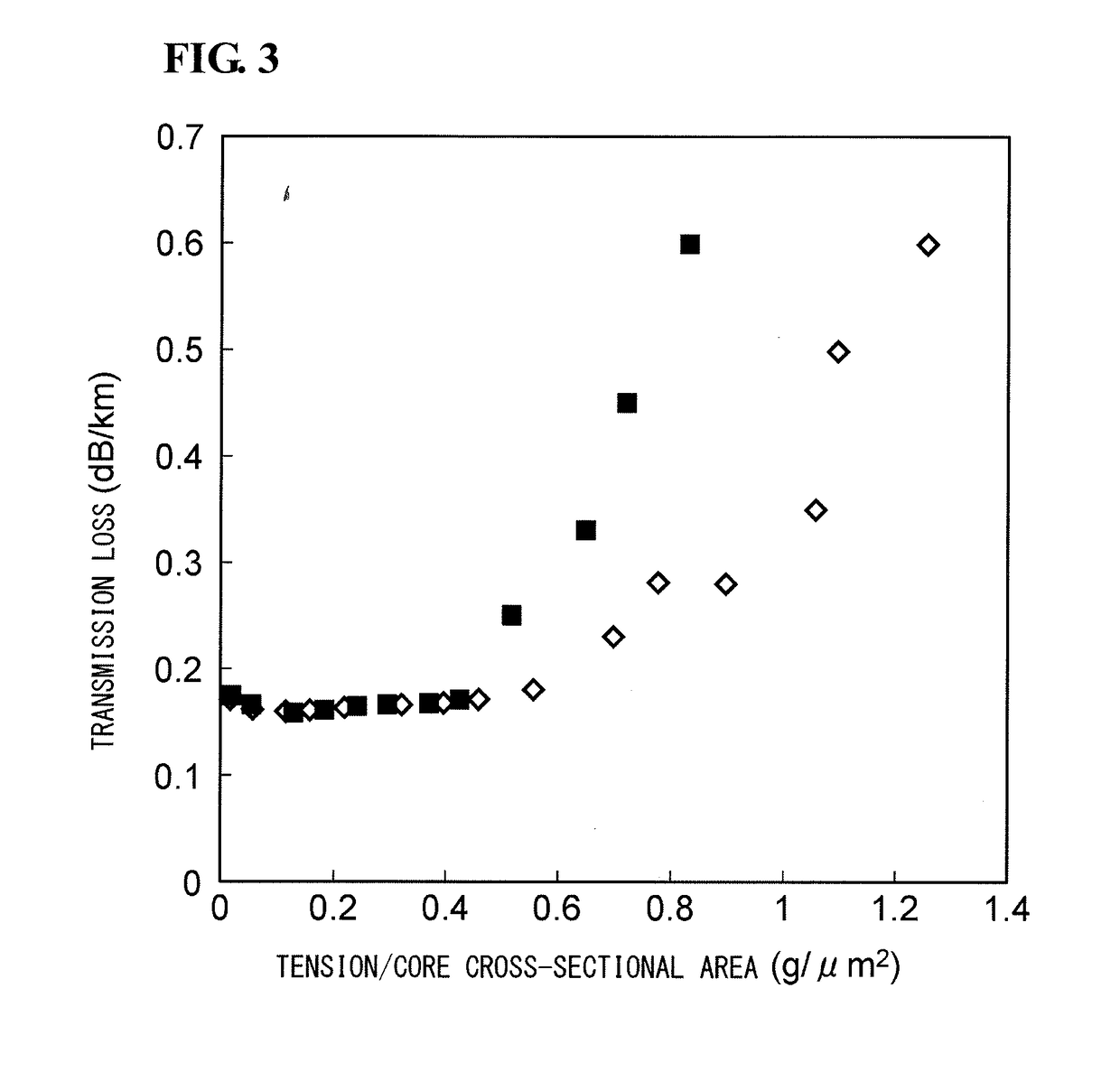Method for producing multi-core optical fiber
- Summary
- Abstract
- Description
- Claims
- Application Information
AI Technical Summary
Benefits of technology
Problems solved by technology
Method used
Image
Examples
example 2
In Example 2, the outer glass diameter of an optical fiber was 140 μm, the average core diameter was 8 μm, and the number of cores N was 4.
[0031]Table 3 shows production conditions, etc. of multi-core optical fibers of Example 3.
TABLE 3Tension percore cross-DrawingTensionsectionalTransmissiontensionper corearea T / ST / (S / Sf)lossT (g)T / N (g)(g / μm2)(g)(dB / km)720.024690.1732150.0614060.16549120.1332800.15870180.1846860.16191230.2460920.164112280.2974980.165140350.3793720.167161400.42107780.17196490.52131210.25245610.64164010.33273680.72182750.45315790.83210870.6
example 3
In Example 3, the outer glass diameter of an optical fiber was 180 μm, the average core diameter was 11 μm, and the number of cores N was 4.
[0032]Table 4 shows production conditions, etc. of single-core optical fibers of Comparative Example.
TABLE 4Tension percore cross-DrawingTensionsectionalTransmissiontensionper corearea T / ST / (S / Sf)lossT (g)T / N (g)(g / μm2)(g)(dB / km)110.022440.18330.067320.175660.1214650.158880.1619530.1611110.2226860.16216160.3239060.16320200.4048830.15825250.5061040.15431310.6275680.1535350.7085450.1539390.7895210.15445450.90109860.15853531.05129390.1655551.09134280.1763631.25153810.1866661.31161130.19174741.47180660.2583831.65202640.4
In Comparative Example, the outer glass diameter of an optical fiber was 125 μm, the average core diameter was 8 μm, and the number of cores N was 1.
[0033]FIG. 2 is a graph showing the relationship between drawing tension T and transmission loss. FIG. 3 is a graph showing the relationship between tension per core cross-sectional area...
PUM
| Property | Measurement | Unit |
|---|---|---|
| Pressure | aaaaa | aaaaa |
| Mass | aaaaa | aaaaa |
| Mass | aaaaa | aaaaa |
Abstract
Description
Claims
Application Information
 Login to View More
Login to View More - R&D
- Intellectual Property
- Life Sciences
- Materials
- Tech Scout
- Unparalleled Data Quality
- Higher Quality Content
- 60% Fewer Hallucinations
Browse by: Latest US Patents, China's latest patents, Technical Efficacy Thesaurus, Application Domain, Technology Topic, Popular Technical Reports.
© 2025 PatSnap. All rights reserved.Legal|Privacy policy|Modern Slavery Act Transparency Statement|Sitemap|About US| Contact US: help@patsnap.com



